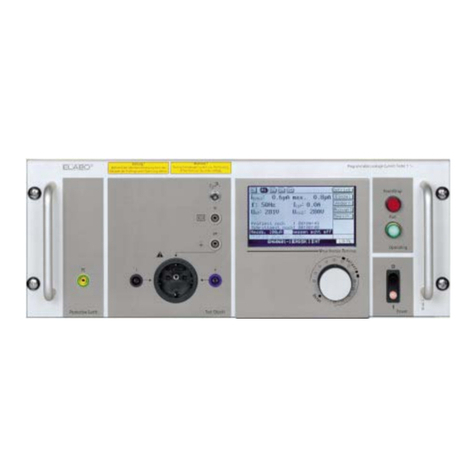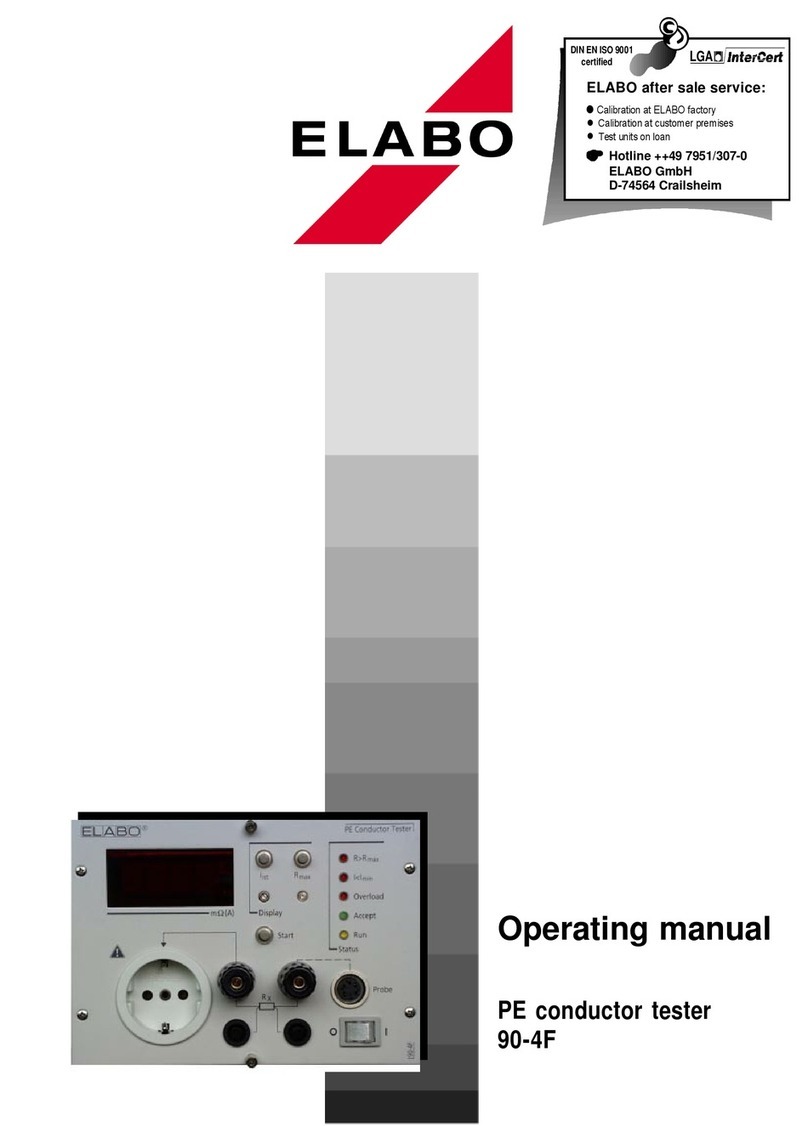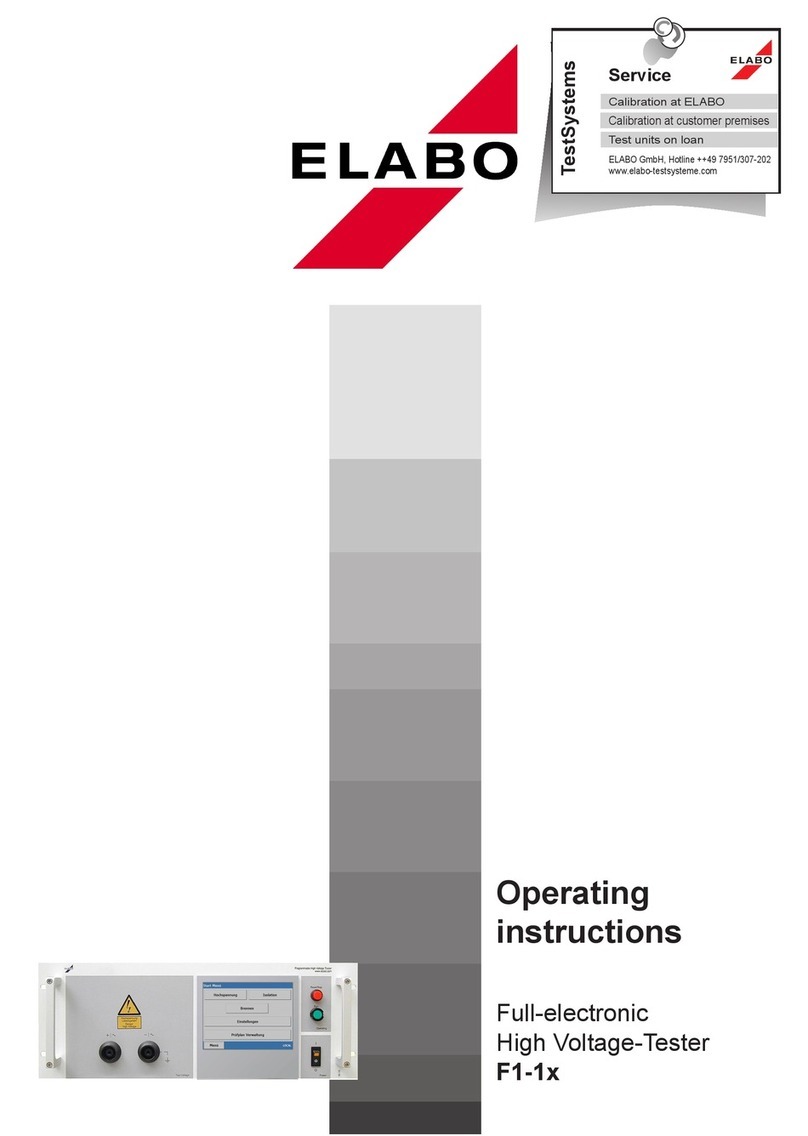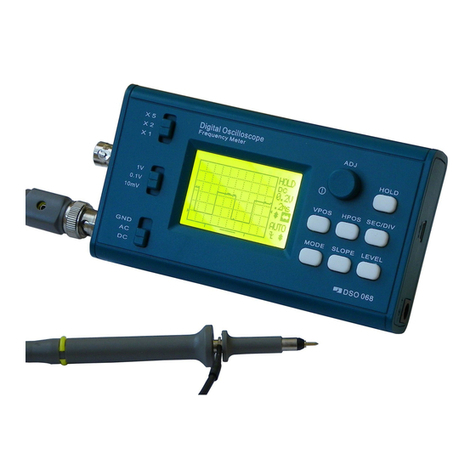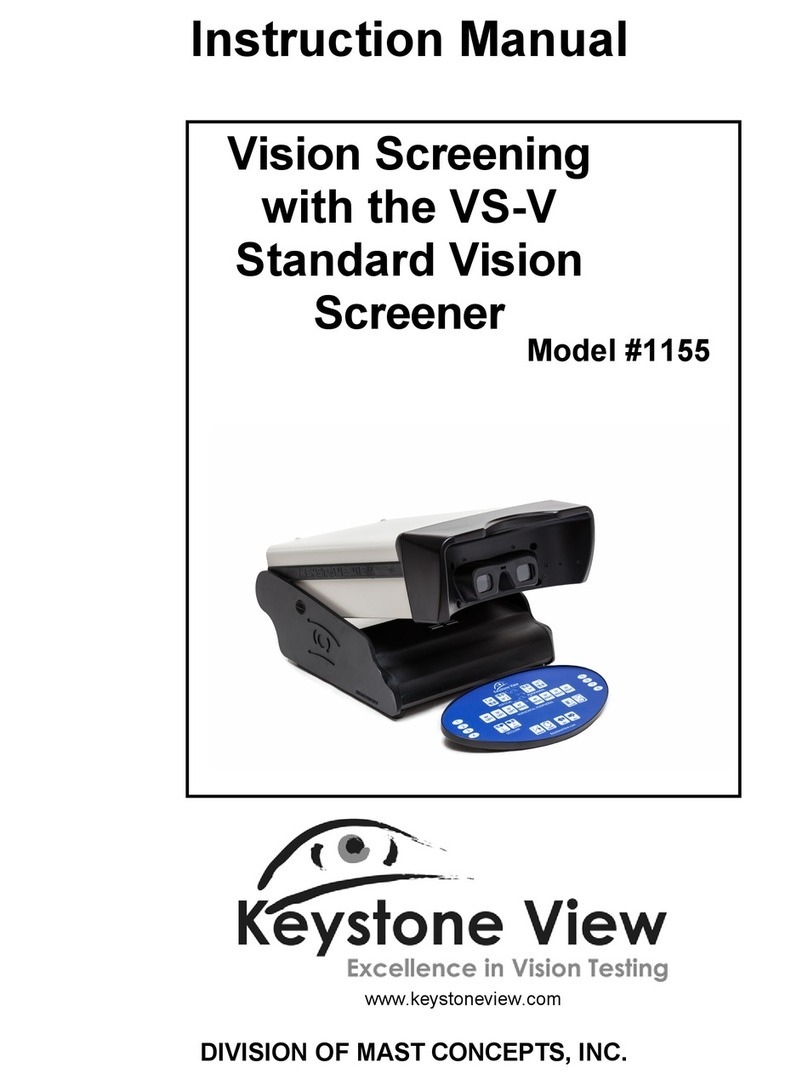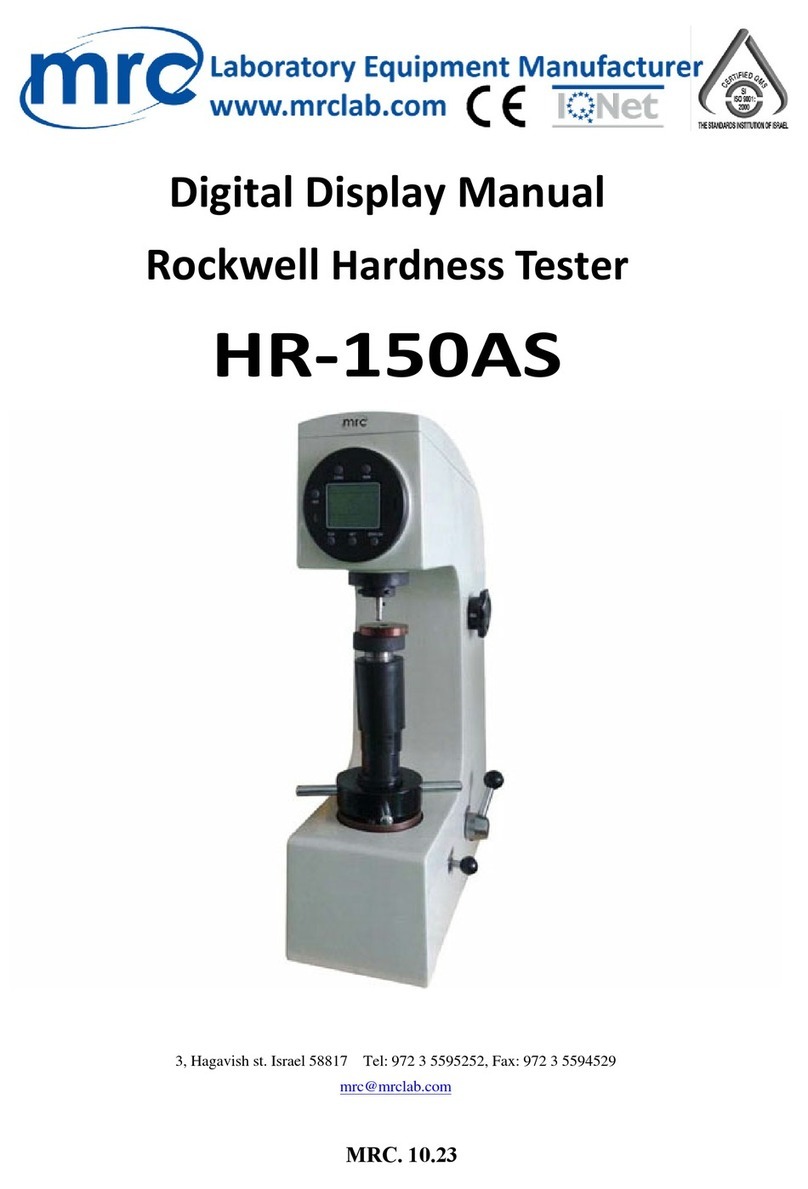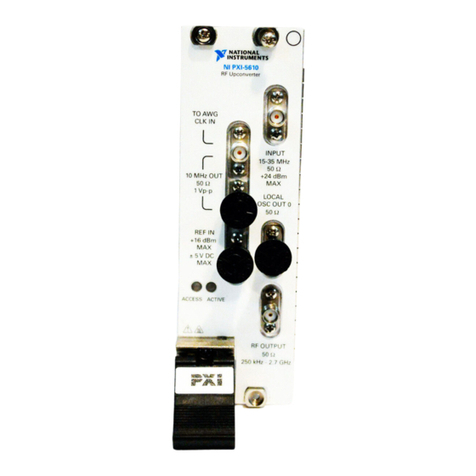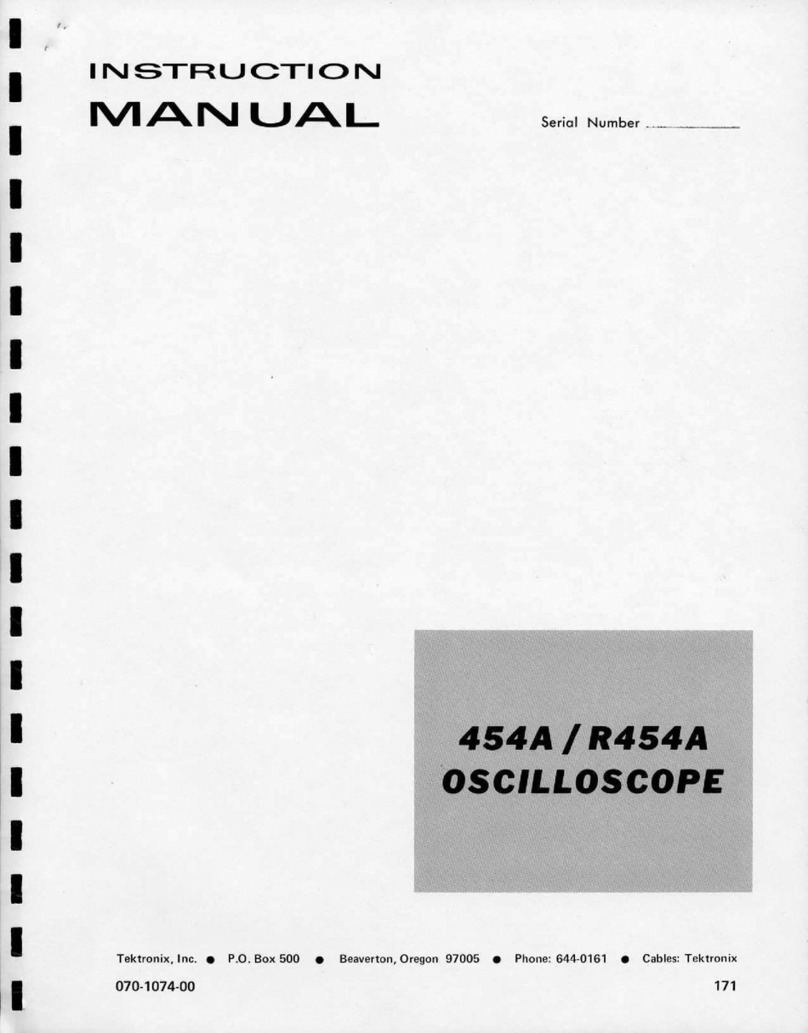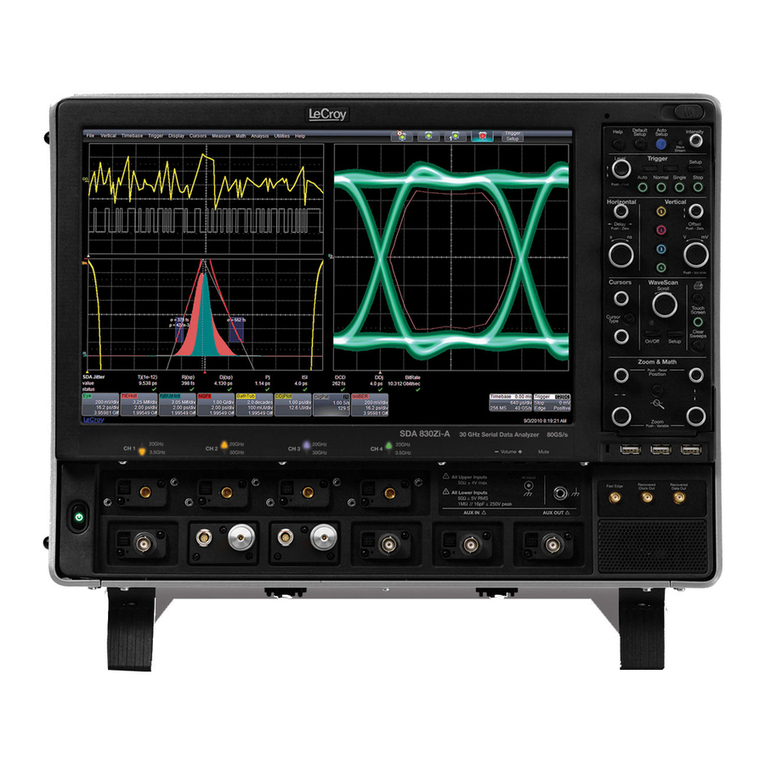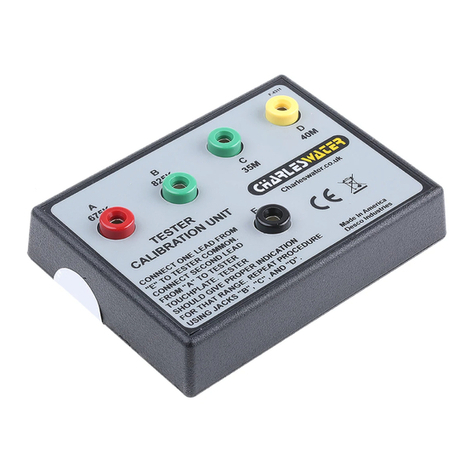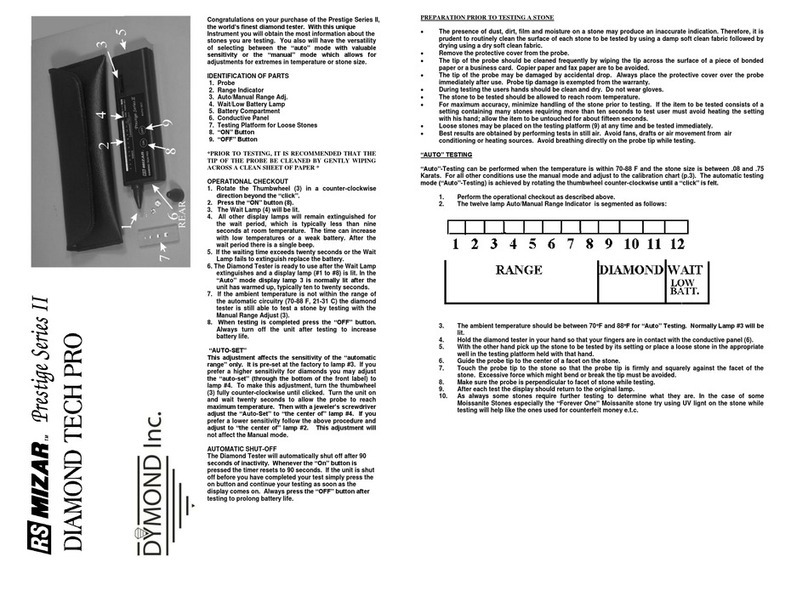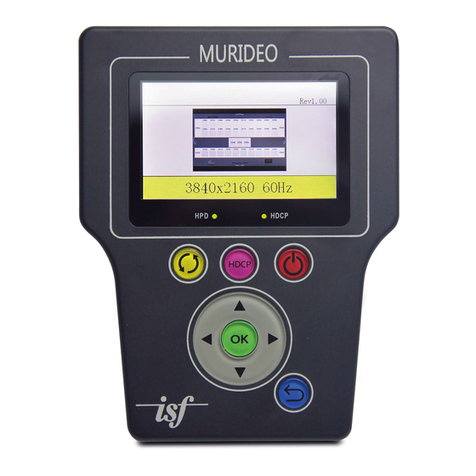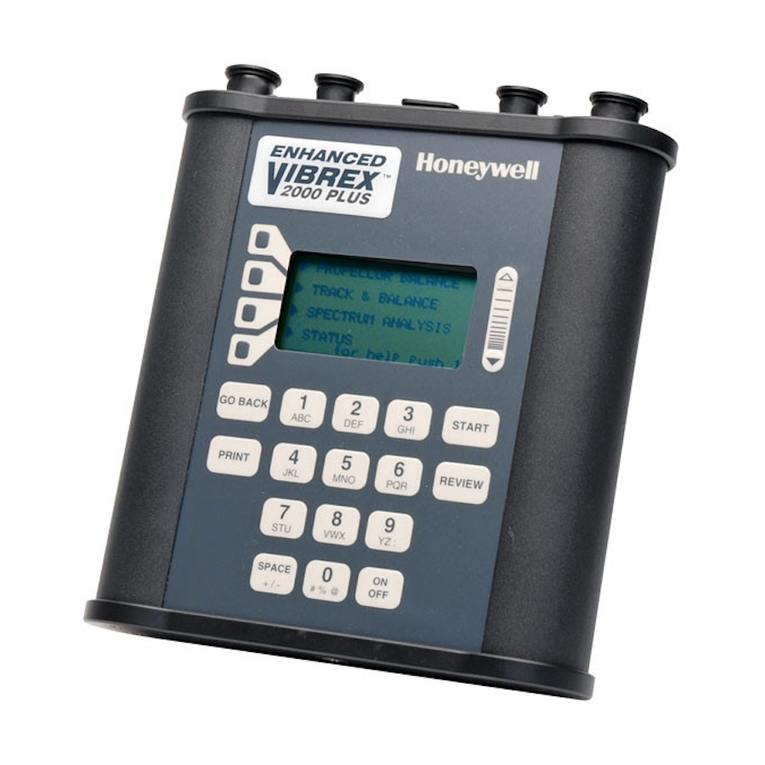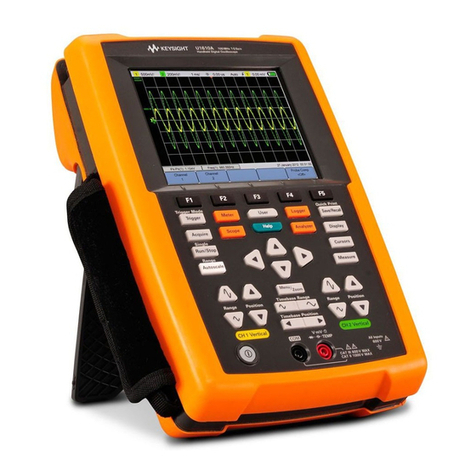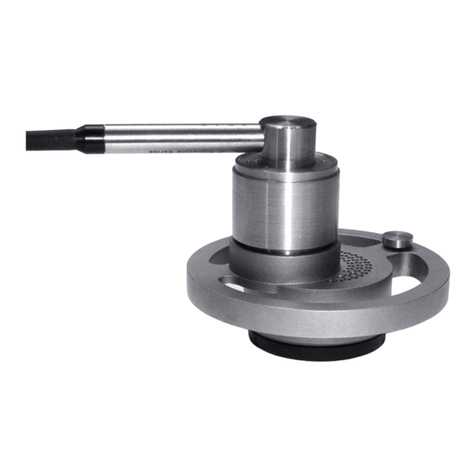ELABO G7-1G User manual

TestSystems
Service
Calibration at ELABO
Calibration at customer premises
Test units on loan
ELABO GmbH, Hotline ++49 7951/307-202
www.elabo-testsysteme.com
Operating Manual
AC Combi-Tester
G7-1G/-1T
G7-1H/-1U
Full-electronic
combi-tester HV,IS,PE

2
1. INTRODUCTION
Combi-tester G7-1G/-1H/-1T/-1U
Contents
A OPERATING ELEMENTS ........................................................................ 6
Info about device versions and options.................................................................... 7
1 INTRODUCTION....................................................................................... 9
1.1 GENERAL INFORMATION ...................................................................... 9
1.2 ABBREVIATIONS AND SYMBOLS ....................................................... 10
1.3 SHORT DESCRIPTION OF THE TESTERS .......................................... 10
1.4 Standards supported............................................................................ 12
1.5 NAME PLATE......................................................................................... 12
2 SAFETY INSTRUCTIONS...................................................................... 13
2.1 MARKINGS FOR SAFETY INSTRUCTIONS AND WARNINGS ........... 13
2.2 WARRANTY ........................................................................................... 13
2.3 USE AS PER SPECIFICATIONS AND EXCLUSION OF LIABILITY..... 14
2.4 GENERAL RULES OF CONDUCT AND SAFETY INSTRUCTIONS .... 14
2.5 PROTECTIVE FACILITIES / EMERGENCY OFF .................................. 15
2.6 OPERATOR QUALIFICATIONS............................................................. 15
2.7 WORKING CLOTHES (PERSONAL PROTECTION EQUIPMENT) AND
PROTECTION AT WORK....................................................................... 15
2.8 MAINTENANCE...................................................................................... 16
2.9 MOISTURE AND HUMIDITY .................................................................. 16
2.10 COMPLIANCE WITH THE TECHNICAL DATA ..................................... 16
2.11 PHYSICAL/DESIGN CHANGES TO THE SYSTEM/DEVICE................ 16
2.12 OTHER INFORMATION ......................................................................... 16
2.13 INFORMATION ON THE HIGH VOLTAGE............................................. 17
2.14 DISCHARGING TEST OBJECTS WITH INTERNAL CAPACITANCE .. 17
3 PUTTING INTO OPERATION................................................................. 19
3.1 TRANSPORT AND INSTALLATION ...................................................... 19
3.2 AMBIENT CONDITIONS ........................................................................ 19
3.3 INSTALLATION IN HOUSING OR RACK .............................................. 19
3.4 CONNECTION TO THE CONNECTION BOX / CONNECTION PANEL /
TEST SYSTEM............................................................................. 20
3.4.1 Requirements for connecting lines to the test object............. 22
3.4.2 Cable length ............................................................................... 22
3.5 MAINS CONNECTION ........................................................................... 23
3.6 USING AND CONTROLLING ................................................................ 23
3.7 CONNECTION TO THE COMPUTER .................................................... 23
3.8. OPERATING TOUCH DISPLAY............................................................. 24
3.8.1 Entering arbitrary numerical values.......................................... 24
3.8.2 Entering arbitrary text ................................................................ 25
3.9 PASSWORD PROTECTION.................................................................. 26
3.9.1 Password level 1......................................................................... 26
3.9.2 Password level 2......................................................................... 26
3.9.3 Password level 3......................................................................... 26
3.10 SWITCHING ON ..................................................................................... 28
3.11 CHANGING LANGUAGE....................................................................... 29
3.12 STATE PAST SWITCH ON HV/IS........................................................... 30
3.12.1 SWITCH ON HV/IS ................................................................................. 31
3.12.2 STATES ISO ................................................................................. 32
3.12.3 STATES PE ................................................................................. 33
3.13 CONTACT MONITORING ...................................................................... 34
3.14 SAFETY CIRCUITS SK1 and SK2......................................................... 35
3.14.1 Fault in the device‘s safety circuit ............................................ 35

3
1. INTRODUCTION
Combi-tester G7-1G/-1H/-1T/-1U
3.15 INDICATION AT THE DISCHARGE OF TEST OBJECTS..................... 35
4 OPERATING MODES............................................................................. 36
4.1 FAST-START-MODE OR NORMAL-MODE .......................................... 37
4.2 NORMAL-MODE TEST SEQUENCE.................................................... 38
4.2.1 HV/IS-test normal mode ............................................................. 39
4.2.2 PE-test normal mode.................................................................. 40
4.2.3 Normal mode input step............................................................ 41
4.2.4 Normal mode output step ......................................................... 42
4.4 Current tripping modes.............................................................. 42
4.2.4 Normal mode time step ............................................................. 43
4.3 FAST-START-MODE TEST SEQUENCE .............................................. 44
4.3.1 Fast-Start-Mode PE-HV-ISO-Test .............................................. 45
5 ERROR MESSAGES.............................................................................. 46
6 CONNECTIONS / INTERFACES............................................................ 47
6.1 POWER CONNECTIONS....................................................................... 47
6.1.1 High Voltage ................................................................................ 47
6.1.2 PE-Conductor Test (Rx)............................................................. 47
6.1.3 X6 Warning lamp set 94-2C connection................................... 48
6.2 INTERFACES ......................................................................................... 49
6.2.1 Ethernet-INTERFACE X9 .......................................................... 49
6.2.2 USB-NTERFACE X9 ................................................................... 49
6.2.3 RS232 INTERFACE X9 ................................................................ 49
6.2.4 Service-INTERFACE X9a (RS232)............................................. 49
6.2.5 DIGITAL INTERFACE X7 ............................................................. 50
6.2.5.1 OUTPUTS................................................................................ 50
6.2.5.2 INPUTS.................................................................................... 52
6.2.5.3 DIO - additional digital interface (option) ............................ 53
6.2.6 XS8 - Expanded digital/analog interface (option) ................... 53
6.4 HIGH VOLTAGE CONNECTOR X3 ...................................................... 56
6.5 PE-TEST PROBE 94-4S CONTROL CONNECTOR X11 ........... 57
7 ACCESSORIES AND ATTACHMENTS ................................................. 58
7.1 TEST CABINET (OPTION)..................................................................... 58
7.2 WARNING LIGHTS 94-2C / F9-1A........................................................ 59
7.3 TEST PROBES 94-2A............................................................................ 59
8 MAINTENANCE AND CARE.................................................................. 60
8.1 FUSE REPLACEMENT .......................................................................... 60
8.2 CARING FOR THE HOUSING ............................................................... 60
8.3 CARING FOR THE TOUCHSCREEN DISPLAY .................................... 60
9 TECHNICAL DATA ................................................................................ 61
9.1
DEVICE-SPECIFIC TECHNICAL DATA........................................................61
9.2 COMMON TECHNICAL DATA DC- DEVICES ...................................... 62
9.3 INTERFACES, MISCELLANEOUS ....................................................... 62
10 TOUCHSCREEN DISPLAY MENU SYSTEM ........................................ 63
10.1 GENERAL............................................................................................... 63
10.1.1 Overview, HV test example ........................................................ 64
10.2 MAIN MENU ........................................................................................... 65
10.3 MANUAL TEST ...................................................................................... 66
10.3.1 Manual test with actual parameter ........................................... 67
10.3.2 Load parameter........................................................................... 69
10.4 PARAMETER SET MANAGEMENT ...................................................... 71
10.4.1 Load Parameter set..................................................................... 72
10.4.2 Edit Parameter set ...................................................................... 74

4
1. INTRODUCTION
Combi-tester G7-1G/-1H/-1T/-1U
10.4.3 Create parameter set .................................................................. 75
10.4.4 Delete parameter set................................................................... 76
10.5 TEST PLAN MANAGEMENT AND AUTOMATIC TESTING.................. 77
10.5.1 Load test plan / Auto testing ..................................................... 79
10.5.2 Automatic test ............................................................................ 81
10.5.3 Fault handling Auto Test ............................................................ 83
10.5.4 Edit test plan ............................................................................... 85
10.5.5 Create test plan........................................................................... 86
10.5.6 Delete test plan .......................................................................... 87
10.6 SETUP (DEVICE PARAMETER)............................................................ 88
11 TEST PARAMETERS............................................................................. 94
11.1 PARAMETERS FOR HIGH VOLTAGE TEST......................................... 94
11.2 PARAMETERS INSULATION RESISTANCE TEST ISO ...................... 98
11.3 SETTING PARAMETERS PROTECTIVE EARTH CONDUCTOR
TEST (PE)............................................................................................. 102
11.4 SETTING PARAMETERS BURN (OPTION) ....................................... 104
11.5 TIME-STEP........................................................................................... 107
11.6 CALCULATION OF THE IDLE TIME (HV / ISO).................................. 108
12 OPTIONAL OUTPUTS / INPUTS ........................................................ 109
12.1 BASE SETTINGS OUTPUTS/INPUTS................................................. 109
12.1.1 Digital Output/Input Setup ........................................................111
12.1.2 Analog Outputs/Inputs ............................................................ 112
12.2 ADDITIONAL DIGITAL INTERFACE OPTION G7-1 E06 .................... 114
12.3 EXPANDED DIGITAL/ANALOG INTERFACE OPTION G7-1 E07 ..... 115
12.4 CREATE PARAMETER BLOCKS........................................................ 116
12.4.1 Digital Outputs .......................................................................... 117
12.4.2 Analog Output........................................................................... 118
12.4.3 Digital Inputs (Input)................................................................. 120
12.4.4 Analog Inputs............................................................................ 121
12.5 Create Test plans (Input/Output) ...................................................... 123
12.6 Load and execute test plans (Input/Output)..................................... 124
12.6.1 Start /execute test plan (auto- mode)...................................... 124
12.6.1.1 Read digital input ................................................................ 125
12.6.1.2 Read analog input................................................................ 125
12.6.1.3 Set digital output ................................................................. 126
12.6.1.4 Set analog output ................................................................ 126
12.6.2 Start /execute test plan
(step mode).........................................127
12.6.2.1 Read digital input ................................................................ 127
12.6.2.2 Read Analog Input ............................................................... 127
12.6.2.3 Set Digital Output ................................................................ 128
12.6.2.4 Set Analog Output ............................................................... 128
13 ELABO LITE-SOFTWARE ................................................................... 129
13.1 COMMANDLINE TOOL:....................................................................... 129
13.2 FLASH-PROGRAMER FÜR FIRMWARE UPDATE ............................ 129
13.3 TREIBER TEST ................................................................................... 129
13.4 RESULT EXPLORER/MESSWERTSPEICHER AUSLESEN............... 129
13.5 RS-CONFIG / SERIAL INTERFACE RS232 ....................................... 130
13.6 TRANSLATION TOOL.......................................................................... 130
14 FAST START MODE ............................................................................ 131
14.1 FAST START MODE OVERVIEW ........................................................ 132
14.2 FAST-START-MODE STATUS DISPLAY ............................................. 133
15 OVER VIEW OPTIONS......................................................................... 135
15.1 OPTION E03 SAFETY CURRENT LIMITATION AC-TESTER............ 136
Load characteristic current-limited................................................... 137

5
1. INTRODUCTION
free page
Combi-tester G7-1G/-1H/-1T/-1U

6
TouchDisplay H4
S1/H1
S1/H1
H3 S2/H2
H3 S2/H2
1. INTRODUCTION
Combi-tester G7-1G/-1H/-1T/-1U
A OPERATING ELEMENTS
base-
device types display HV
(V AC)
HV
(mA)
ISO
(V DC)
PE
(A)
G7-1G yes 100 ... 2500
200 ... 5000 max. 100 1200 5 ... 32
G7-1T no
G7-1H yes 100 ... 1500
200 ... 3000 max. 200 1200 5 ... 32
G7-1U no

7
X9a X7 X8 X6 X11 X2
F1/X1 X10 X3
X9
1. INTRODUCTION
Info about device versions and options
The device can be delivered with some optional features, this options
are completes or enhances the performance range of the device. Some
optional features are only as single option possible. ELABO completes
the number of options constantly (as required). Optional features of the
device, are described in the appendix „Options“
Combi-tester G7-1G/-1H/-1T/-1U

8
1. INTRODUCTION
No. Equipment Function
F1 Fuse drawer Adapter for mains fuse
S1/H1 Toggle switch/pilot lamp Mains switch with indicator lamp
S2/H2 Illuminated button Reset (red) Switching OFF test voltage / Reset
S3/H3 Illuminated button Set (green)
Ready for testing
Starting test run (only at display devices)
H4 TouchDisplay Operating of the tester
X1
Cold appliance mounting jack with
fuse adapter 10 A
Main cable connection / mains fuse (ne wire fuse
T 3.15 A - 5 x 20 mm)
X2 HV-jack Connection high voltage + / ~ (high potential)
X3 HV-jack Connection high voltage - / ~ (low potential)
X4 HV-jack Feed back of high voltage ( + / ~) for X2 (Option)
X5 HV-jack Feed back of high voltage ( - / ~) for X3 (Option)
X6 Socket (Warning Lamps) Connection warning lamps
X7 Socket (D-SUB 25pole) female DA-interface - digital Inputs/Outputs, Safety circuit
X8 Socket (D-SUB 37pole) male
DA-interface - additional digital/analog inputs/out-
puts (options)
X9 RJ45 (DSUB, USB) - socket
Ethernet bus interface (RS232, USB - option)
for automatic control of the tester (and rmware
update of touch display module)
X9a Socket (D-SUB 9pole)
RS-232 - Service-interface (rmware update control
module)
X11 HV-jack Connection high voltage - parallel to X2
X12 HV-jack Connection high voltage - parallel to X3
Combi-tester G7-1G/-1H/-1T/-1U

9
1. INTRODUCTION
1 INTRODUCTION
The safety of all personnel who come into contact with the tester essentially
depends on an adequate understanding of the device. For this reason:
Prior to the rst putting into operation read these operating
instruction!
Note on operating instructions!!
These operating instructions apply to devices with and without the
touchscreen display. The menus shown can be useful for illustrating
the functions on devices without a display and therefore contribute
to an improved understanding of the device.
1.1 GENERAL INFORMATION
These operating instructions will make it easier to become familiar with
tester and its possible uses prior to placing in operation, and to use it
correctly. They contain information that will ensure functionally correct,
cost-effective and safe operation and they must always be available in
the place where the device is used.
The operating instructions are not only an indispensable aid for new trainee
operators, they also contain useful tips, information and suggestions for
the experienced operator. They are a necessary reference work for all
users. By reading the operating instructions
•Hazards will be avoided
•Operating sequences will be optimised and accelerated
•Repair costs and downtimes will be minimised
•Reliability and service life will be increased
The operating instructions should also be read carefully by the device
owners and managerial staff. In particular in relation to transport and in-
stallation, as well warranty aspects.
In chapter 2 important safety instructions and information about hazards
is given that will prepare you for hazardous situations that may occur.
Reading up during operation is unfortunately too late. Also note the fol-
lowing basic principle:
Cautious and careful working is the best protection from
accidents!
The quality of the tests performed using the device is crucially depend-
ent on maintenance and care. Regular maintenance work and care are
described in these operating instructions. If repairs are necessary, we will
be pleased to provide you with support and supply you with the necessary
original spare parts.
If you have questions after reading the operating instructions, the ELABO
hotline (telephone +49 7951/307-202) is available to provide information.
Combi-tester G7-1G/-1H/-1T/-1U

10
SO
•1
•
1. INTRODUCTION
1.2 ABBREVIATIONS AND SYMBOLS
Special option that is not included as standard
List, here the recommended sequence of actions is to be followed
List
CAUTION ELECTRIC HIGH VOLTAGE - DANGER TO LIFE!
Hazardous point, risk of serious injury to the operator and other person-
nel! - chapter 2.1
Risk for the device! - chapter 2.1
Information on efcient and cost-effective operation - chapter 2.1
Combi-tester G7-1G/-1H/-1T/-1U
1.3 SHORT DESCRIPTION OF THE TESTERS
The tester G7-1G are designed for operation by using the integrated
touchscreen display and also via interface.
As an alternative, the device G7-1T are intended to be controlled using
an external PC/PLC. For this reason there is no display.
The modular design of the tester permits optimal adaptation to the indi-
vidual needs of the user. Expansion modules, standard accessories and
individual accessories offer the right solution for every application.
The basic devices available are automated devices (without display) for
use in test systems and „stand-alone“ devices (with display).
By optional features the devices can be equipped with additional functions.
The uses for the device family range from an individual manually operated
test bench, through a PC-controlled test station (with control, evaluation,
statistics and test plan management via PC software) to a complex fully
automatic test station with conveyor belt, autom. contact, labeling etc..
ELABO offers a modern software package for controlling this device series
and the management of the data via a PC.
Devices with touchscreen display
The user can be operated entirely using the touchscreen panel. This
operation covers the control of the device during the test, the generation
and management of test steps and test plans.
The display informs the operator at all times about the parameters and
the status of the tests.
HV part:
The device serves for the insulation test and withstand voltage test at elec-
trical equipment, machines, construction elements and insulating material.
The test is carried out with AC up to 5000 V/ test current maximal 100 mA.

11
1. INTRODUCTION
Combi-tester G7-1G/-1H/-1T/-1U
The electronic voltage ramp up makes it possible to perform tests on
electronic devices that can only be tested non-destructively by slowly in-
creasing the test voltage or on test objects with high self-capacitance. Due
to the fully electronically regulated test voltage, the variable transformer
otherwise used is not necessary. The current and voltage measurements
are made on the high voltage side. An integrated residual voltage meas-
urement ensures safe discharge of test object capacitance.
ISO (insulation) part
Insulation resistance measurement with voltages from 50 V to 1200 V DC
/current limited to maximal 1 mA.
Attention high voltage mortal danger! The resistance measurement is
not current-limited, it is performed with the full HV current.
Attention discharge currents - Danger for Life !!
Particularly valid for test objects with internal capacitance (capacitors).
Particularly if HV tests with direct current (DC) are performed, test ob-
jects with internal capacitances are capable of storing high charges. After
disconnection, these charges may be compensated via the body of the
operator (when touching the contacts).
If the test object remains connected to the HV tester sufciently long after
switching OFF the high voltage, it will automatically be discharged via the
HV-tester. Prerequisite for this: If discharging is prevented (disconnection),
"extremely dangerous discharge currents“ may be generated.
PE part
Measurements of the PE conductor resistance or the voltage drop at the
PE conductor are possible with a test current of 10 ... 32 A at a voltage
of 6 V or 12 V AC.
Function section (option):
Switching unit and power supply of the test object. Measurement of the
voltage, current and power consumption. Depend of the variation of the
function part, up to 3x 400 V/25 A.
PC software (option)
By controlling the tester via a PC/PLC all the advantages of modern soft-
ware can be exploited. Graphic, colour user prompts enable the operator
to see the status of the tests at a glance. Test parameters can be saved
in test plans, access control using passwords is possible. The test data
can be evaluated using Accept/Fault statistics. Other advantages are
the acquisition of barcodes using scanners, data integration via in-house
networks, communication with conveyor belt controllers, etc..
Important note: To connect the test object to the device, a connection
box or a connection panel is required. Another possibility is installation in
a test system (rack) with suitable power supply and switch panel.

12
1. INTRODUCTION
1.4 Standards supported
The device supports tests, e.g., in accordance with:
• EN 60335-1 Household and similar electrical appliances. Safety
• EN 60598-1 Luminaires
• EN 60950 Information technology equipment. Safety
• EN 61010-1 Safety regulations for electric measurement, control
and laboratory equipment
• EN 60601 Medical electrical equipment
1.5 NAME PLATE
ELABO tester
The name plate (example) is on the rear of the device.
Combi-tester G7-1G/-1H/-1T/-1U
SN. 0000042483
ELABO GmbH
Rossfelder Str. 56
D-74564 Crailsheim
Telefon: +49 7951 307-0
Telefax: +49 7951 307-65
Nennspg. V
~
Nennstrom A
Typ
Baujahr
230 V ; 49 - 61 Hz
3,15 A
G7-1G
2010

13
2. SAFETY REGULATIONS
Combi-tester G7-1G/-1H/-1T/-1U
2 SAFETY INSTRUCTIONS
Before working with the tester the operating instructions and all enclosures
must have been attentively read and understood by all persons operating the
tester. The tester may be operated by trained and skilled staff only.
When the device is in operation, voltages of up to 5000 AC Volt can be
produced. If the device is tted with options, signicantly higher voltages
can occur. There is mortal danger when working with high voltage!
ELABO has therefore equipped this device and all its components with
all the necessary safety features to protect the user against hazards that
may occur during correct use. Please note:
CAUTIOUS AND CAREFUL WORKING IS THE BEST PROTECTION
FROM ACCIDENTS !
2.1 MARKINGS FOR SAFETY INSTRUCTIONS AND
WARNINGS
Danger Zone
Electric High Voltage - danger to life !
IN DEALING WITH HIGH VOLTAGE THERE IS DANGER TO LIFE!
This marking warns of a point that is hazardous due to high electrical volt-
age. It is given beside all work steps during which there is risk of serious
injury for the operator or others. It is given beside working and operating
procedures that are to be followed exactly to ensure people or the tester
are not endangered by high electrical voltage.
PAY ATTENTION TO THE NOTES AND ACT VERY CAREFUL IN
THESE SITUATIONS. ALSO PASS ALL SAFETY REGULATIONS ON
TO OTHER OPERATORS.
Caution !
This sign signies danger for the tester in case of non-observance of
instruction.
Note!
This sign signies that a more effective and more economic use of the
tester is possible.
2.2 WARRANTY
Claims under the warranty can only be made if the warranty conditions
in the general terms and conditions are followed. The conditions in the
operating instructions are also to be observed.

14
2. SAFETY REGULATIONS
2.3 USE AS PER SPECIFICATIONS AND EXCLUSION OF
LIABILITY
The tester is only allowed to be used for the intended tests. Any other usage
is considered incorrect. ELABO is not liable for any resulting damage, the
risk is borne solely by the user. Correct usage also includes compliance
with the information in these operating instructions.
The tester and its components have been developed and built for usage
in an industrial environment. In accordance with DIN EN 55022 ITE, this
system is a class A appliance. Neither the tester as a complete unit nor its
individual components are allowed to be used in a different environment.
If this information is not followed, ELABO accepts no liability whatsoever
for any interference produced and the resulting damage.
Prior to working with the tester, these operating instructions and all ap-
pendices must be carefully read and understood by all personnel operating
the tester. The tester is only allowed to be operated by trained personnel.
The safety features and design of the tester are not allowed to be modi-
ed. Any change requires the express agreement of ELABO.
Unauthorised changes to the tester, as well as the usage of spare parts,
accessories and additional equipment that has not been tested and ap-
proved by ELABO may degrade the function and properties of the tester.
ELABO is not liable for resulting damage.
ELABO does not accept any liability for damage resulting from the failure
to follow the operating instructions or due to failure to take due care dur-
ing transport, installation, handling, operation, care and maintenance or
repair of the device, even if specic mention of this duty to take care is
not specically highlighted in these operating instructions.
2.4 GENERAL RULES OF CONDUCT AND SAFETY
INSTRUCTIONS
The tester is built to the state-of-the-art and recognised safety rules. Nev-
ertheless, during operation there may be a risk of serious injury to the user
or other personnel, or damage to the device or other property.
The tester is only allowed to be used in correct working order and cor-
rectly taking into account the operating instructions. Malfunctions that may
degrade safety are to be rectied without delay.
Managerial staff must ensure personnel tasked with working on the tester
have read and understood the operating instructions prior to starting work.
The managerial staff have the obligation to only ever operate the device in
correct working order and to ensure the operators use the tester correctly.
Combi-tester G7-1G/-1H/-1T/-1U

15
DIN EN 50191
2. SAFETY REGULATIONS
These operating instructions must always be available in the place the
device is installed. Incomplete or illegible operating instructions are to be
replaced without delay. In this situation we would of course be pleased to
be of assistance.
In addition to the operating instructions, statutory, generally applicable
and other binding regulations for the prevention of accidents and for the
protection of the environment are to be followed.
Note:
DIN EN 50191 (VDE 0104) regulates the operation of test systems.
Follow the stipulations in the DIN standard.
2.5 Protective facilities / Emergency Off
- All the system‘s safety features are to be checked for correct function
prior to putting into operation each day.
- Prior to placing the system in operation, all safety features must be cor-
rectly tted and functional.
- Safety features are only ever allowed to be removed for repair.
- Safety limit switches are not allowed to be bypassed.
2.6 Operator qualications
- The operators must hold an appropriate qualication to operate the sys-
tem. The operators must be informed and instructed about the function
and especially the risks and hazards related to the system.
- Anybody who works on the system must have read the operating instruc-
tions, be familiar with the content and follow it.
- The responsible superior has the obligation to instruct the personnel
based on the operating instructions.
- Temporary employees and trainees are only allowed to work on the sys-
tem under the supervision of appropriately qualied personnel.
- The responsibilities of the personnel are to be clearly dened.
2.7 Working clothes (personal protection equipment) and
protection at work
- Wear the necessary working clothing for your activity, e.g. ESD footwear,
safety shoes, ame-retardant clothing, etc. Obtain information on this
issue from your supervisor or the safety ofcer.
- If necessary, wear hearing protection.
Combi-tester G7-1G/-1H/-1T/-1U

16
2. SAFETY REGULATIONS
2.8 Maintenance
- The stipulated maintenance and inspection work is to be performed at
the intervals dened.
- Inform operators prior to starting maintenance and service work.
- During all maintenance and inspection work, electrically isolate the device
/ system and secure against unexpected switch on.
- The work is only allowed to be undertaken by appropriately trained per-
sonnel, all safety precautions are to be taken.
- To perform maintenance and servicing work, workshop equipment ap-
propriate for the work to be performed is imperative!
2.9 Moisture and humidity
- The parts of the system are not allowed to be subject to moisture, hu-
midity and/or dust.
- Particularly the electrical parts and the test mechanism and test sensors
for the system must be protected against moisture, humidity and dust.
2.10 Compliance with the technical data
- The technical performance data as per the name plate must not be ex-
ceeded.
- The fuse protection for the supply cables must not be higher than the
max. value dened by ELABO.
2.11 Physical/design changes to the system/device
Without the prior written approval of ELABO, it is not allowed to make
changes, additions or modications to the system. If this instruction is not
followed, the device/machine/system will lose its EC conformity.
- Immediately replace additional parts and accessories that are not in
correct working condition.
- Only use genuine spare parts. Only these comply with the technically
dened requirements.
2.12 Other information
Escape routes: The escape routes are to be kept clear.
In accordance with UVV „Elektrische Anlagen und Betriebsmittel“
(Electrical systems and equipment) (BGV A2) §2, paragraph 3 the
term Elektrofachkraft (electrician) is dened as followed (translation of
the original German text):
An electrician in the context of the prevention of accidents is a person
who, due to his/her specialist training, knowledge and experience, as well
as knowledge of the application regulations is able to assess the work
allocated and recognise possible hazards.
Combi-tester G7-1G/-1H/-1T/-1U

17
2. SAFETY REGULATIONS
Combi-tester G7-1G/-1H/-1T/-1U
2.13 Information on the high voltage
Attention high electrical voltage - mortal danger!
IN DEALING WITH HIGH VOLTAGE THERE IS DANGER TO LIFE!
When performing tests using the device you will be working with a high
voltage up to 5000 Volt AC. If the device is tted with options, signicantly
higher voltages can occur. There is mortal danger when working with
high voltage!
Follow DIN EN 50191 (DIN VDE 0104). The EN standard regulates the
operation of test systems and test benches.
In the case of test voltages over 1000V the HV device must be equipped
with a warning lamp set (red and green lamps). See chapter 7.2 warning
lights.
Attention high voltage: The contact elements used for the HV and IS
test (test probes etc.) must be designed for the maximum voltage supplied
by the device.
2.14 Discharging test objects with internal capacitance
Attention discharge currents - mortal danger!! particularly in the case
of test objects with internal capacitance (capacitors).
Particularly during tests with DC, test objects with internal capacitance
can store large amounts of charge. After disconnecting, this charge
may be dissipated via the operator‘s body (if the test object is touched in
the appropriate place).
If the test object is left connected to the tester after switching off the high
voltage, it will discharge automatically via the tester. If this discharging
is prevented (disconnection), potentially fatal discharge currents may be
produced.
Discharging via the device
UDC (V)
6000 V
3000 V
1000 V
60 V
t (s)10 s
fast dis-
charge time out discharge
+ 1MOhm
discharge in
time

18
2. SAFETY REGULATIONS
Combi-tester G7-1G/-1H/-1T/-1U
After the end of the test (end of test time), the test object connected is automati-
cally discharged. For this purpose a discharge resistor is connected internally
and the voltage across the resistor read (residual voltage measurement).
The discharging is undertaken using an internal resistor until a voltage of
3000 V is reached, the device then connects a 1 MOhm resistor in parallel.
If the voltage doesn‘t underrun a residual voltage of 60 V within - 10 s at DC
the device indicates the fault message „Attention residual voltage“.
Note: The residual voltage measurement can not switched off on the
„Setup“ menu or using an interface command.
Automatic discharging is performed only on HV-DC or ISO test. At HV-AC
test the high voltage is switched off on zero-crossing.
Attention: Leave the test object connected until it is discharged. The
device indicates this state with the illumination of the green RUN button.
Additional discharging via an external resistor
The device has an output for the connection of an external discharge re-
sistor. At the end of the HV/ IS test this output is connected by the device.
On this topic see chapter 6.2.5.1 „Outputs/external discharge relay“.

19
3. MAKEREADY
3 PUTTING INTO OPERATION
3.1 TRANSPORT AND INSTALLATION
The tester is supplied fully packed and is only allowed to be removed from
the packaging in the immediate vicinity of the installation location.
The device can be installed in a suitable industrial rack or housing for 19“
plug-ins. The device must be secured against unintentional movement.
The surface on which the device is installed must be appropriate for the
weight of the tester (approx. 30 kg!) and always provide a secure mount-
ing for the device.
During installation it is to be ensured the labels with information and safety
labels on the device are not covered.
To avoid an electrical shock because of condense water, the device should
have room temperature before the rst use.
3.2 AMBIENT CONDITIONS
The tester is not allowed to be operated in a dusty, inammable, aggres-
sive or humid environment. The values permitted for temperature and
atmospheric humidity are given in chapter 1.4 „Main technical data“.
3.3 INSTALLATION IN HOUSING OR RACK
Note: Slide the device carefully to the rear to the stop. Do not jam the
device on insertion.
After the inserting the device in a housing, it must be secured at the front
using 4 screws.
Operation with a loosely inserted tester is not allowed!
Installation without a modular system or housing is not allowed.
Fig. 3.1: Tester with display and accessories installed in 19“ / 4HU housing
Combi-tester G7-1G/-1H/-1T/-1U

20
G7-1
X2/X12
X3-2
X3-3
HV/ISO
G7-1
X2/X12
X3-2
X3-3
HV/ISO
G7-1x
X2/X12
X3-2
X3-3
HV/ISO
3. MAKEREADY
3.4 Connection to the connection box / connection panel /
test system
Devices with internal switching: The device is provided with a connec-
tion box, a connection panel. Devices with internal switching can be rec-
ognised by the Krönes HV connector. ELABO oers suitable connection
boxes and connection panels for the device. The gures below show the
principles of connection using a box.
Connection for HV-Testing
HV test probe
HV test probe
Mains plug X1
Connection box
Test object
Test object
Mains plug X1
Connection box
with contact plate
Test object
Mains plug X1
Connection box
Fig. 3.2a: Principle of connection via box and HV-test probe
Fig. 3.2b: Principle of connection via box and HV-test probe at contact plate
Attention: The principle of connection according g. 3.2c, is only permis-
sible by using a two hand control unit (ELABO order nummer F9-1L).
Fig. 3.2c: Principle of connection via box (only permissible by using a two
hand control unit).
Combi-tester G7-1G/-1H/-1T/-1U
This manual suits for next models
3
Table of contents
Other ELABO Test Equipment manuals
